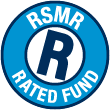


North America

The BNY Mellon US Equity Income fund targets a yield of at least 50% in excess of the S&P 500. The fund typically consists of between 30 and 60 holdings and is value orientated focusing on a high dividend income with solid divided growth.
The strategy on which the UCITs vehicles are based is the Income Stock strategy, which launched in 2011. The Income Stock strategy is run out of Boston and forms part of the Equity Income element within the Equity desk at Newton. There is both a GB domiciled and an Irish domiciled open-ended fund available within the IA North America sector.
Click here to read the BNY Mellon approach to ESG investing.
The investment philosophy of the strategy is to identify attractively valued equities that have strong fundamentals with a catalyst for business improvement that will increase positive momentum towards the company. This approach helps the team to avoid value traps. Although the fund is benchmarked against the S&P 500 due to the yield target, the investment universe of the fund is the Russell 1000 index.
The initial universe is screened to identify candidates that meet the team valuation requirement. Screening is undertaken from a sector neutral standpoint with each sector requiring different valuation metrics - in essence this could be whatever metric makes sense and back tests well for the portfolio managers and the fundamental analysts team. Stocks are then ranked on a decile basis. There is also a value score and a business momentum score (mainly estimate momentum) as the team like to look at a breadth of estimates. There is magnitude of estimate increase factored into the modelling as well as price momentum. This all produces a business improving score and a strong fundamental score.
Once the universe is screened, then fundamental analysis is undertaken working with the industry analysts, ESG analysts to set upside and downside targets and understand the risk reward and margin of safety.
Position weights are limited to 7%, although they will typically be below 5%. The manager believes that a portfolio should not take any idiosyncratic risk as the team may get the investment thesis wrong for a holding. The team do not want this to be a sector fund and as such they limit sector exposure to a maximum of 35%. The team have a liberal approach to sector exposure in the sense that if they do not like a sector (e.g. REITS) they will have a zero weight. If the team want defensive exposure, they are not forced to own areas that are rich in valuation, they can obtain that exposure by going overweight another sector with similar characteristics.
In building positions, the fund tends to invest in large cap stocks so liquidity is not an issue, and they could initiate a position at the maximum weighting, however it is more likely that a 75bps position would be initiated as this is the minimum position the manager would have (the fund needs to be active versus the S&P 500 and Russell 1000). The momentum of a position will be monitored with the weight increased accordingly.
Although the fund is benchmarked against the S&P 500 due to the yield target, the investment universe of the fund is the Russell 1000 index. The focus of the fund is US large cap value equities, and it seeks to outperform the Russell 1000 Value index (as opposed to the Russell 1000 index) over a full market cycle. There will be points in the cycle where this is more challenging, especially when the market is favouring areas that are not aligned with the investment process of the strategy (i.e. expensive stocks with low volatility attributes). Historically, the fund has performed well in a higher interest rate environments due to the process not focusing on bond proxies.
The fund can be used as part of a diversified allocation to North American equities within a portfolio, due to its focus on large cap value companies. The fund can also be used as part of an overall portfolio for investors with a yield requirement.
Although the fund is benchmarked against the S&P 500 due to the yield target, its investment universe is the Russell 1000 index with the strategy aiming to stay within its large cap value style. In addition, the fund seeks to outperform the Russell 1000 Value index over a full market cycle due to the large cap value orientation of the strategy. The yield of the fund is viewed in the context of the overall portfolio, not from a barbell approach, with the team aiming to construct a portfolio that has good dividend growth prospects as well as a good dividend yield. The fund sees itself as different to its peers due to its different composition to the S&P 500, lack of bond proxies in the fund compared to the S&P 500 and peers, as well as the fund being able to deliver performance in a rising rate environment. This is an interesting US equity income fund that is run by portfolio managers that have worked together for over twenty five years and on the strategy since launch.
Important Notice
This document is aimed at Investment Professionals only and should not be relied upon by Private Investors. Our comments and opinion are intended as general information only and do not constitute advice or recommendation. Information is sourced directly from fund managers and websites. Therefore, this information is as current as is available at the time of production.
Rayner Spencer Mills Research Limited is a limited company registered in England and Wales under Company. Registration Number 5227656. Registered Office: Number 20, Ryefield Business Park, Belton Road, Silsden, BD20 0EE. RSMR is a registered trademark.